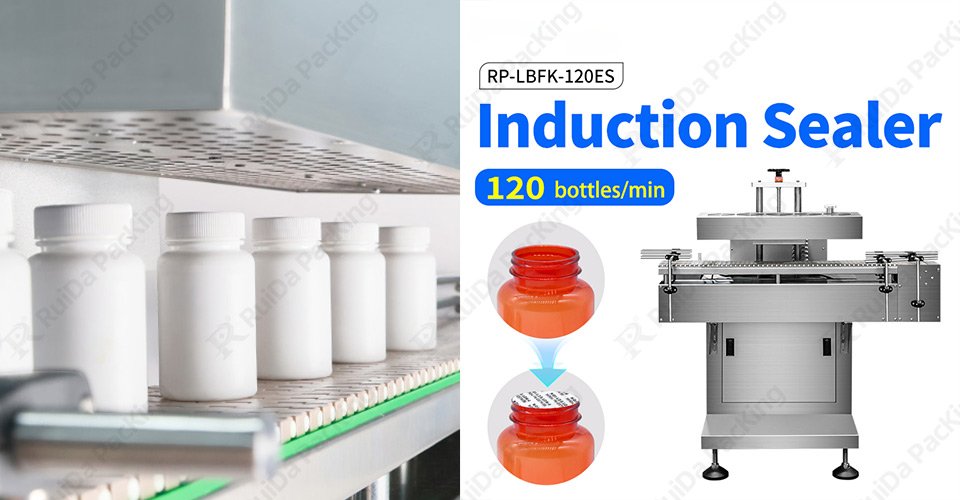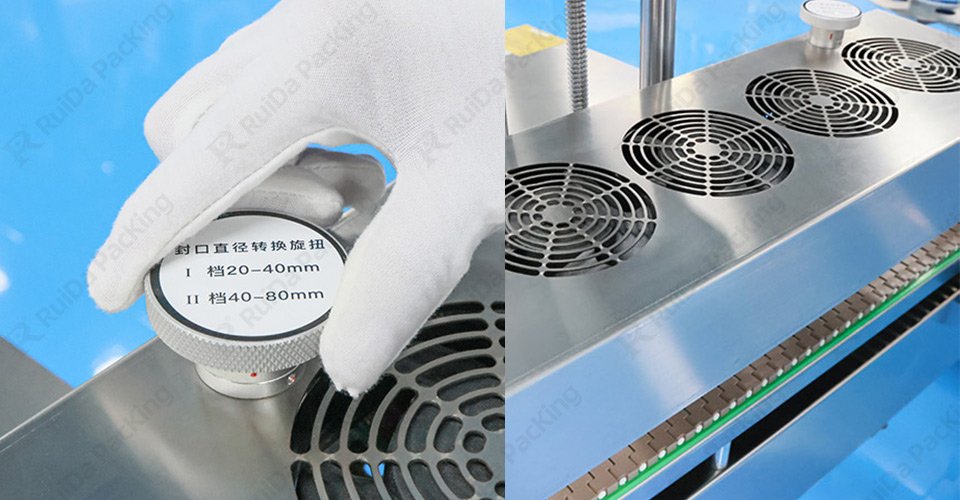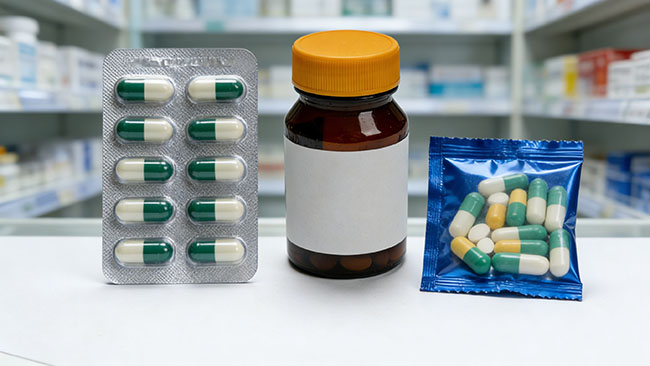Selagem por indução as máquinas desempenham um papel crítico nas indústrias de embalagem modernas, especialmente nos setores farmacêutico, alimentício e de cosméticos. Com tecnologia de selagem eficiente e confiável, essas máquinas não apenas garantem a segurança e a qualidade do produto, mas também aumentam a eficiência da produção. Este artigo explora os princípios de funcionamento e as aplicações generalizadas das máquinas de selagem por indução, ajudando você a entender melhor a importância desse equipamento.

1. Princípio de Funcionamento das Máquinas de Selagem por Indução
1.1 Estrutura Básica
Os principais componentes de uma máquina de selagem por indução incluem a bobina de indução, o sistema de controle, o elemento de aquecimento e o sistema de transporte. A bobina de indução é o componente central, gerando correntes de alta frequência através da indução eletromagnética para aquecer os materiais de selagem, como o papel alumínio. O sistema de controle regula a temperatura e o tempo de selagem para garantir uma qualidade de selagem consistente para cada recipiente.
1.2 Processo de Selagem por Indução
O processo de selagem por indução geralmente envolve várias etapas:
– Preparação do Material: Comece preparando o produto e os materiais de embalagem correspondentes. Certifique-se de que o material de selagem de papel alumínio esteja bem ajustado ao recipiente para obter a melhor selagem.
– Configuração da Máquina: Antes de começar, ajuste os parâmetros da máquina—como temperatura, tempo de selagem e velocidade do transportador—de acordo com o tipo de material de embalagem e produto.
– Aquecimento e Selagem por Indução: À medida que o material de embalagem passa pela bobina de indução, a indução eletromagnética gera calor que derrete rapidamente o papel alumínio, criando uma selagem. Este processo é extremamente rápido, geralmente levando apenas milissegundos, após os quais o papel alumínio se liga firmemente à borda do recipiente.
– Resfriamento e Inspeção: Após a selagem, o material esfria rapidamente e solidifica. Neste ponto, uma inspeção é necessária para garantir que cada produto atenda aos padrões de selagem exigidos.
1.3 Avaliando a Qualidade da Selagem
A selagem por indução garante principalmente uma selagem forte e durabilidade. Comparado aos métodos de selagem tradicionais, a selagem por indução oferece segurança aprimorada, protegendo itens como medicamentos e alimentos da umidade e oxidação, enquanto previne contaminação. Uma boa selagem ajuda a prolongar a vida útil do produto e a preservar sua qualidade.
2. Principais Aplicações das Máquinas de Selagem por Indução
2.1 Indústria Farmacêutica
Na farmacêutica, as máquinas de selagem por indução são amplamente utilizadas para embalar medicamentos. Esses produtos requerem armazenamento em ambientes específicos, e a selagem por indução oferece um excelente efeito de selagem que preserva os medicamentos dos impactos ambientais, mantendo a eficácia. Além disso, previne a falsificação, garantindo a segurança do paciente.
2.2 Indústria Alimentícia
As máquinas de selagem por indução também desempenham um papel essencial na embalagem de alimentos. A embalagem de alimentos requer proteção eficaz contra umidade e resistência à oxidação para garantir a frescura e a segurança do produto. Com a tecnologia de selagem por indução, os alimentos permanecem frescos, retendo seu sabor e nutrientes, enquanto reduzem o desperdício e aumentam a competitividade no mercado.
2.3 Cosméticos e Produtos de Cuidado Pessoal
Na embalagem de cosméticos, as máquinas de selagem por indução são cruciais para manter a qualidade e a estabilidade do produto. Muitos cosméticos contêm ingredientes ativos que se beneficiam de uma selagem eficaz para evitar evaporação ou deterioração, melhorando a experiência do usuário.
2.4 Outras Indústrias
Além dos campos acima, as máquinas de selagem por indução são amplamente utilizadas em eletrônicos, produtos químicos e outros setores. Aqui, a selagem por indução não apenas fornece excelentes resultados de selagem, mas também aumenta a eficiência da produção e reduz os custos de mão de obra.
3. Vantagens das Máquinas de Selagem por Indução
As máquinas de selagem por indução oferecem benefícios significativos. Em primeiro lugar, elas aumentam a eficiência da produção devido aos seus processos de selagem rápidos e automatizados, permitindo que as linhas de produção funcionem mais rapidamente com mínima intervenção manual.
Além disso, as máquinas de selagem por indução têm baixos custos de manutenção. Com uma estrutura simples e baixas taxas de falha, a manutenção regular pode prolongar a vida útil do equipamento.
Além disso, as máquinas de selagem por indução são ambientalmente amigáveis. Sua excelente capacidade de selagem reduz a necessidade de materiais de embalagem excessivos, ajudando a diminuir o impacto ambiental de uma empresa.

4. Escolhendo a Máquina de Selagem por Indução Certa
Ao selecionar uma máquina de selagem por indução, considere alguns fatores-chave:
– Escala de Produção: Diferentes escalas de produção requerem diferentes tipos de máquinas de selagem por indução. Linhas de produção em pequena escala podem optar por máquinas menores, enquanto operações em grande escala precisam de equipamentos mais eficientes e automatizados.
– Tipo de Material de Selagem: Diferentes materiais de selagem têm requisitos específicos. Certifique-se de que o equipamento que você escolher possa lidar com seus materiais de embalagem.
– Facilidade de Operação: Máquinas que são fáceis de operar e entender reduzem o tempo de treinamento e melhoram a eficiência do trabalho.
Conclusão
As máquinas de selagem por indução são indispensáveis nas indústrias de embalagem modernas. Ao entender seus princípios de funcionamento e amplas aplicações, você pode utilizar melhor essa tecnologia, fornecendo soluções de embalagem mais seguras e eficientes para seus produtos. Escolher a máquina de selagem por indução certa melhorará sua eficiência de produção e qualidade do produto.


